Matrix rigidity regulates a switch between TGF-β1-induced apoptosis and epithelial-mesenchymal transition
- PMID: 22238361
- PMCID: PMC3290638
- DOI: 10.1091/mbc.E11-06-0537
Matrix rigidity regulates a switch between TGF-β1-induced apoptosis and epithelial-mesenchymal transition
Abstract
The transforming growth factor-β (TGF-β) signaling pathway is often misregulated during cancer progression. In early stages of tumorigenesis, TGF-β acts as a tumor suppressor by inhibiting proliferation and inducing apoptosis. However, as the disease progresses, TGF-β switches to promote tumorigenic cell functions, such as epithelial-mesenchymal transition (EMT) and increased cell motility. Dramatic changes in the cellular microenvironment are also correlated with tumor progression, including an increase in tissue stiffness. However, it is unknown whether these changes in tissue stiffness can regulate the effects of TGF-β. To this end, we examined normal murine mammary gland cells and Madin-Darby canine kidney epithelial cells cultured on polyacrylamide gels with varying rigidity and treated with TGF-β1. Varying matrix rigidity switched the functional response to TGF-β1. Decreasing rigidity increased TGF-β1-induced apoptosis, whereas increasing rigidity resulted in EMT. Matrix rigidity did not change Smad signaling, but instead regulated the PI3K/Akt signaling pathway. Direct genetic and pharmacologic manipulations further demonstrated a role for PI3K/Akt signaling in the apoptotic and EMT responses. These findings demonstrate that matrix rigidity regulates a previously undescribed switch in TGF-β-induced cell functions and provide insight into how changes in tissue mechanics during disease might contribute to the cellular response to TGF-β.
Figures
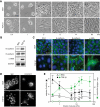
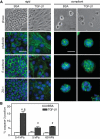
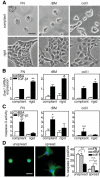


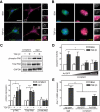
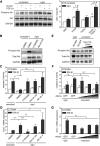
References
-
- Bacman D, Merkel S, Croner R, Papadopoulos T, Brueckl W, Dimmler A. TGF-beta receptor 2 downregulation in tumour-associated stroma worsens prognosis and high-grade tumours show more tumour-associated macrophages and lower TGF-beta1 expression in colon carcinoma: a retrospective study. BMC Cancer. 2007;7:156. - PMC - PubMed
-
- Bakin AV, Tomlinson AK, Bhowmick NA, Moses HL, Arteaga CL. Phosphatidylinositol 3-kinase function is required for transforming growth factor beta-mediated epithelial to mesenchymal transition and cell migration. J Biol Chem. 2000;275:36803–36810. - PubMed
Publication types
MeSH terms
Substances
Grants and funding
LinkOut - more resources
Full Text Sources
Other Literature Sources
Research Materials

